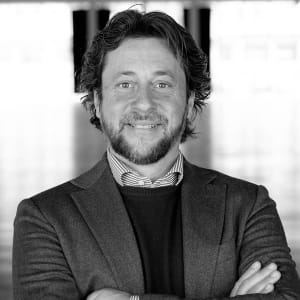To whom
Osteopaths
Benefit
After taking this course the participant knows how
- To describe the main anatomical and physiological properties of fascia
- To present the connective tissue as the major bio-mechanical and bio-electrical mediator of the structure and function interrelationship
- To propose various fascial mechanisms by which somatic dysfunction may be induced
- and maintained
- To illustrate the principles of tensegrity model and its application on osteopathic practice through Littlejohn’s mechanics and compressional‐tensional approach
- To illustrate the most common fascial techniques in osteopathic practice and propose different fascia-mediated mechanisms behind the OMT efficacy and effectiveness
- To appreciate the extent of sliding motions between fascial layers in vivo, through real-time dynamic ultrasound evaluation
- To show the extent of motion impairment of organ related fascia layers following post-surgical events or chronic and acute disorders
- To demonstrate via real-time US imaging some of the effects of fascial osteopathic techniques on improving fascial range and quality of movement, in relation with contiguous fascial planes or with anatomically related organs
Contents
As a structural element of the body connective system, fascia can be considered as a ubiquitous tissue permeating the whole organism. It seems to respond to cellular and macroscopic lines of tension by reorganizing itself accordingly. From this perspective, the repercussion of a fascial restriction will be body-wide, and may potentially create stress on any structure enveloped by fascia itself.
There exist different fascial mechanisms by which a somatic dysfunction may be induced and maintained at different levels. Yet osteopathic fascial treatment aims to release such tensions, to restore function and to balance the inherent body mechanisms, so to be often proposed as an adjunctive treatment for various conditions.
However, a better understanding of the physiology and mechanism behind a techniques’ effectiveness, as well as a sound clinical evidence base is certainly needed to provide clarity with modalities of application. In fact, it is evident that various factors may interplay with myofascial function and its ability to respond to fascial treatment, such as plastic, viscoelastic and piezoelectric properties of connective tissue, together with various mechanical, neuromuscular, hydraulic, sympathetic and parasympathetic responses.
This course will offer an overview of all these crucial topics together with the most common fascial techniques used within the osteopathic armamentarium, including fascial unwinding, Still technique and harmonic technique. Different forms of application will be also described, from indirect, direct to combined method. To guide the clinician through the understanding and the application of such fascial tools, various evidence-based mechanisms as well as different hypothesis based on osteopathic principles will be proposed and discussed.
"The osteopathic approach to fascia" Level 1 - January 14-15, 2022
- The fascial continuum in its structure and function: introduction to the main anatomical and physiological properties of fascia
- Dimensional palpation of the various connective tissues level
- The connective tissue from a tensegritive prospective: from cellular to body level from an osteopathic perspective
- Global and local tenso-compression test and treatment
"The osteopathic approach to fascia" Level 2 - August 18-19, 2022
- The Zink test: evaluation and treatment of the fascial system
- The fascial rhythm: evaluation of its properties and anomalies
- Practice on specific evaluation of the fascial rhythm through general/remote and focal/local listening
- Indirect and direct fascial techniques: principles, methods of their application and practice
"The osteopathic approach to fascia" Level 3 - January 13 - 14, 2023
- The Fascial Unwinding: History, Principles, Methods of application
- Practice of local and global fascial unwinding
- Rationale, evidence, indications and contraindications of osteopathic fascial work
"The osteopathic approach to fascia" Level 4 - August 17-18, 2023
- The Still Technique: History, Principles, Methods of application
- The Still Technique applied to fascia
- The Still Technique applied to cranial and articular dysfunctions
- The osteopathic approach to scar tissue
The course is taught in English.
Trainer
Paolo Tozzi, MSc Ost, DO, PT

Master Science in Osteopathy at the Dresda University (Germany); Doctorat en Osteopathie and Posturologie at the International Association Jean Monnet, amongst the European University Foundation of Bruxelles (Belgium); Bachelor Science Honours Degree in Osteopathy, D.O., at the European School of Osteopathy, Maidstone (UK); Degree in Physiotherapy at the Catholic University of Sacred Heart, Rome (Italy); Master Level Reiki Diplome, at the Sri Papaji Centre, Rome (Italy).
Head of Academics of the ASOMI College of Sciences in Malta; Honorary Tutor in College of Human and Health Sciences for the Swansea University; former Treasurer of the Osteopathic European Academic Network (Os.E.A.N.); former Viceprincipal of the School of Osteopathy CROMON of Rome; former Vicepresident of the Italian Association of Posturologists (A.I.R.O.P.).
Member of the Fascia Science and Clinical Applications Advisory Board of the Journal of Bodywork and Movement Therapies; Reviewer for Handspring Publishing (UK); Former reviewer for the International Journal of Osteopathic Medicine.
Lecturer of biomechanics and manual therapy in different universities in Rome; Lecturer of various post-graduate courses on osteopathic subjects in Italy, Europe and overseas; Speaker in various national and international congresses of osteopathic medicine and manual therapy (included the International Fascia Research Congress); Author of various articles on fascia and fascia research; Expert on Osteopathy applied to domestic and exotic animals.
Fees
- First level 390 € + VAT 24%
- Two levels total 650 € + VAT 24%
- Three levels total 980 € + VAT 24%
- Four levels total 1200 € + VAT 24%
Registration
Not available at the moment